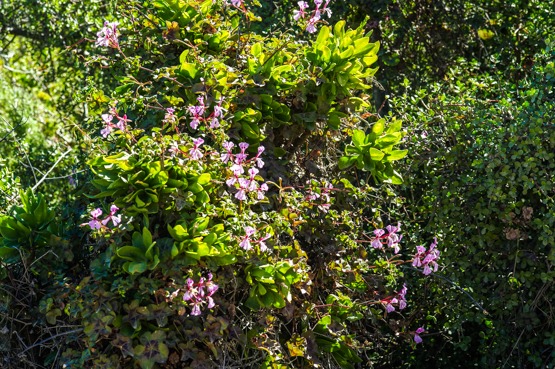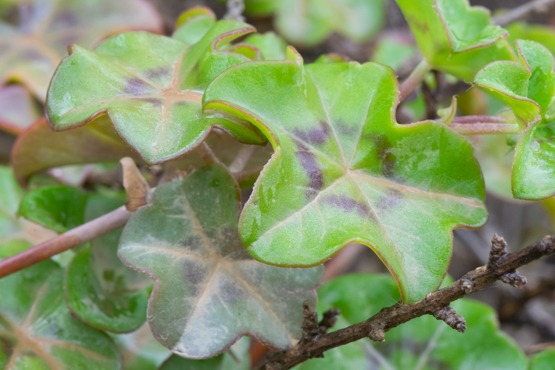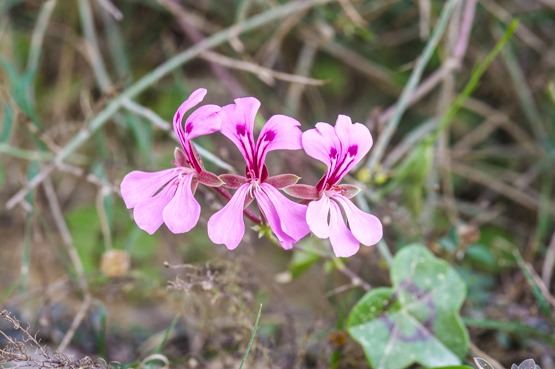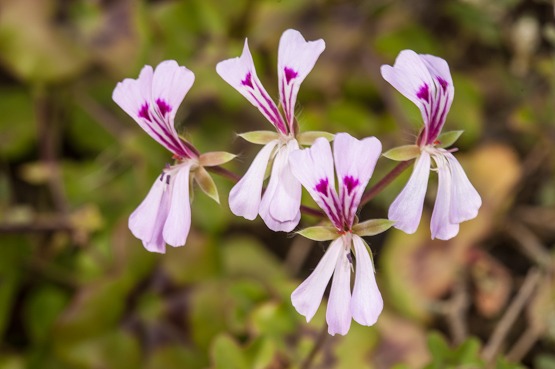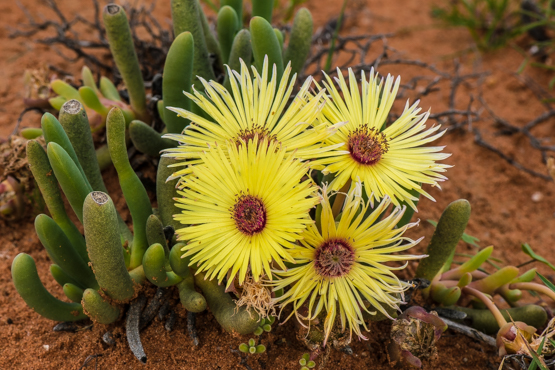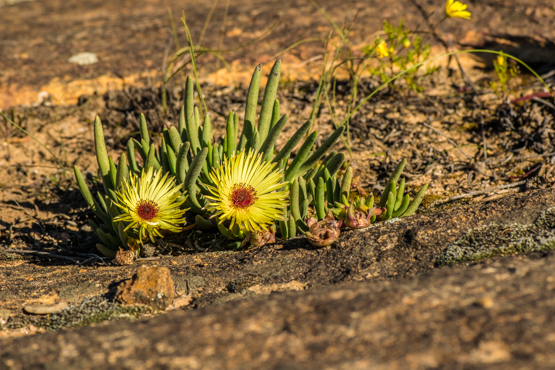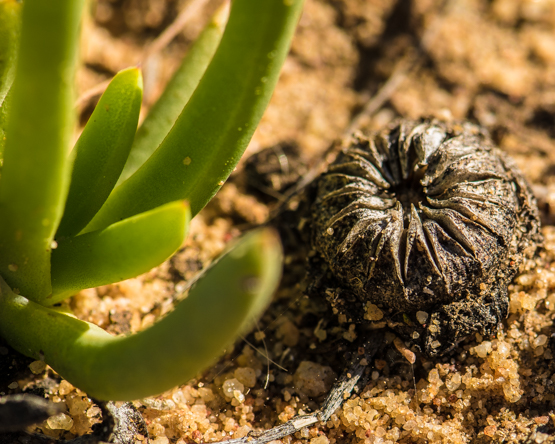This species was introduced in the Netherlands as far back as 1700 and is the ancestor of the peltate-leaved cultivars. It is quite variable in the size, texture and colouring of the leaves and makes an excellent garden plant which grows easily from cuttings. In nature it is widespread from Wellington and Worcester to Kwazulu-Natal.
It is a climbing plant with soft slender stems up to 4 m long, which trail into and through other bushes.
The leaves are 2-7 cm in diameter with peltate (shield-like) blades, which are round to 5- to 7-angled or -lobed; usually glabrous (with a smooth surface) and sometimes decorated with zonal markings.
Flowers are 4-5 cm in diameter and arranged with 2-9 per inflorescence. They have 5 purple to light pink or even whitish petals; the upper two have darker markings and are much wider than the lower three.
Flowering time is spring and summer (mainly Sept. – Jan.)
